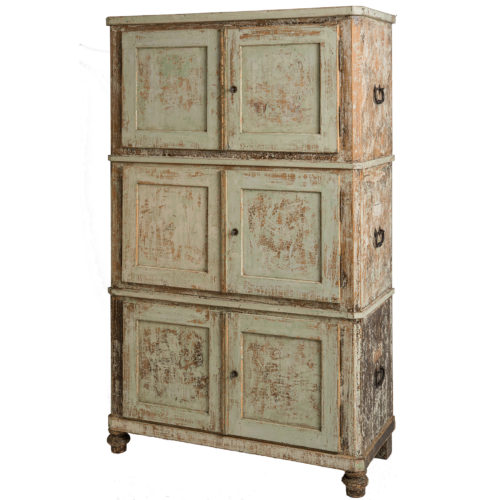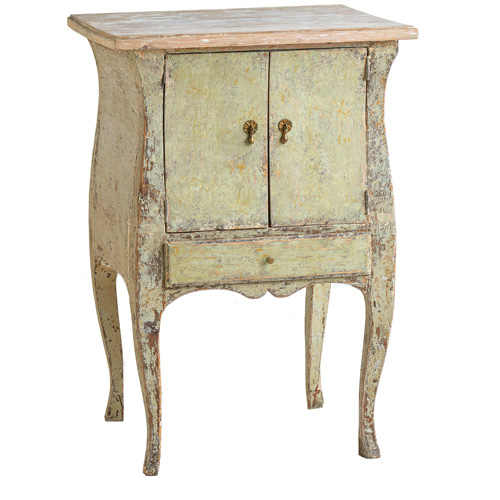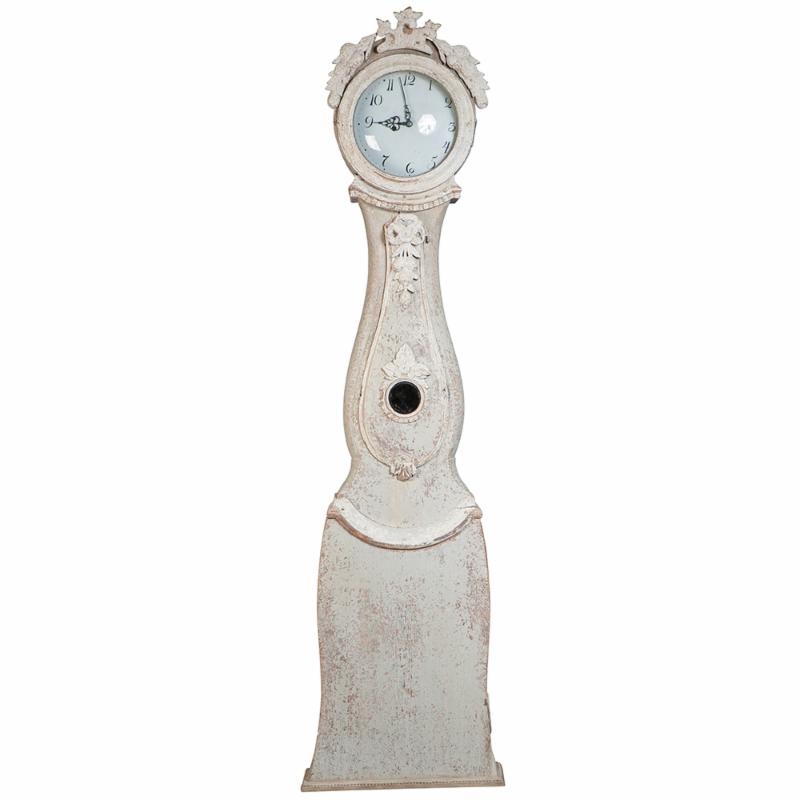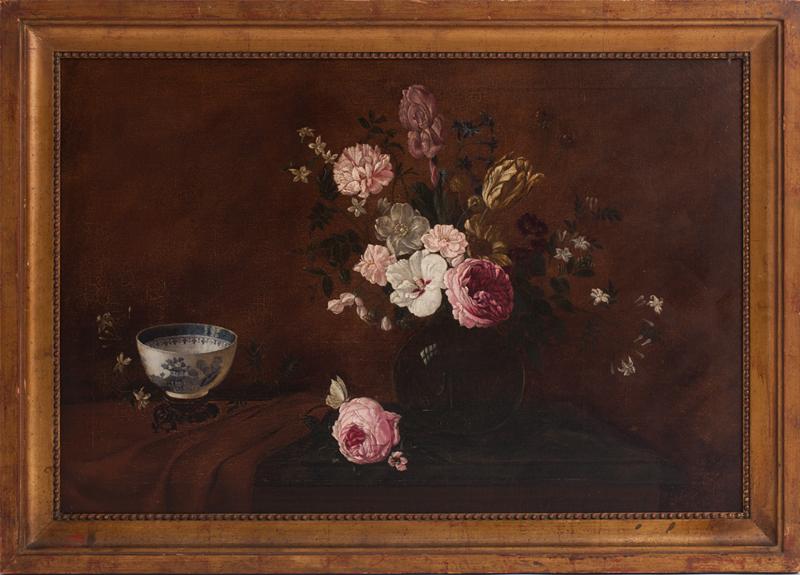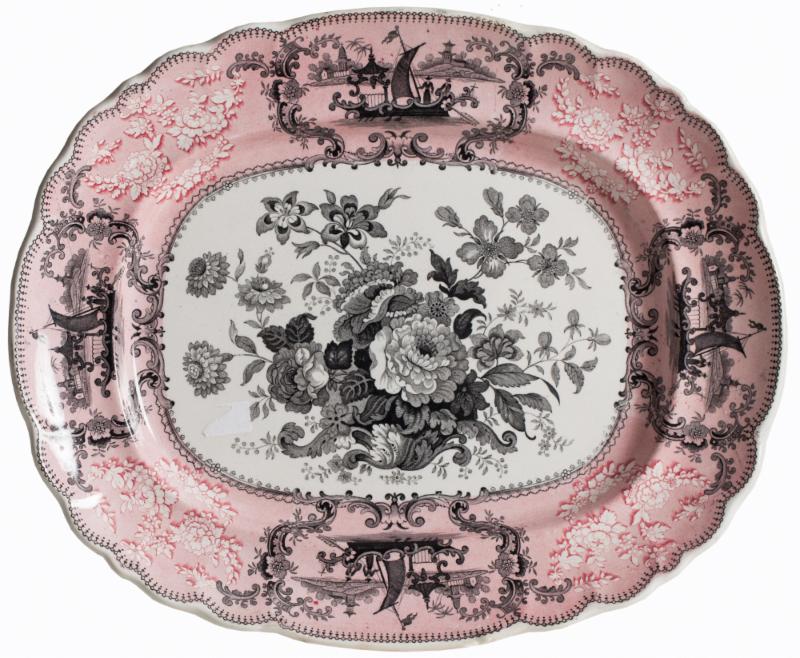
As we approach Labor Day we wanted to share some of the wonders of Stockholm from our summer visit. The palaces of King Gustav III at Haga and Drottningholm where we saw so many examples of Swedish designs and colors were an inspiration. Some wonderful new pieces acquired on this trip will be on our website soon!

THE COPPER TENTS at the entrance to Haga Park amazed us. Once home to the kings guards, these soaring masterpieces bring the glory of Swedish blue and gold to life. This blue has been the inspiration for countless pieces of Swedish painted furniture.

THE KINGS PAVILLION, where a sweeping dining table and thirty six Gustavian dining chair greeted guests who dined in private under the twinkling chandeliers as King Gustav did not want the servants to be present.

THE MIRROR ROOM, the most beautiful room in the pavilion with mirrors reflecting the surrounding landscape. In the late 18th century there were musical evenings where the guests arrived on the water in gilded gondolas inspired by King Gustav’s visit to Italy. On one side a magnificent Klismos settee and chairs.

DROTTNINGHOLM PALACE where the royal family lives in the summer. We arrived after a picturesque boat ride to see miles of magnificent gardens and stately rooms each with a ceramic stove for heating.

THE BLUE CHINA ROOM,on departing the palace we came upon this heartthrob room, painted blue with magnificent and inventive displays of platters, pitchers, plates and tureens. We wish we could recreate this at Dawn Hill Antiques!!!

SWEDISH BLUE
is unique, a blue like no other.
Blue is a classic color on many of the most beautiful pieces of furniture from the 18th and 19th centuries. Some new pieces have just arrived at Dawn Hill Antiques.
Click on images for further details.

A Swedish two part late Gustavian period Secretary dated 1837.This piece has exceptional details with the interior drawers numbered by a talented calligrapher. The blue paint is mostly original with some touch ups.
78.5″ high, 44″ wide, 17″ deep
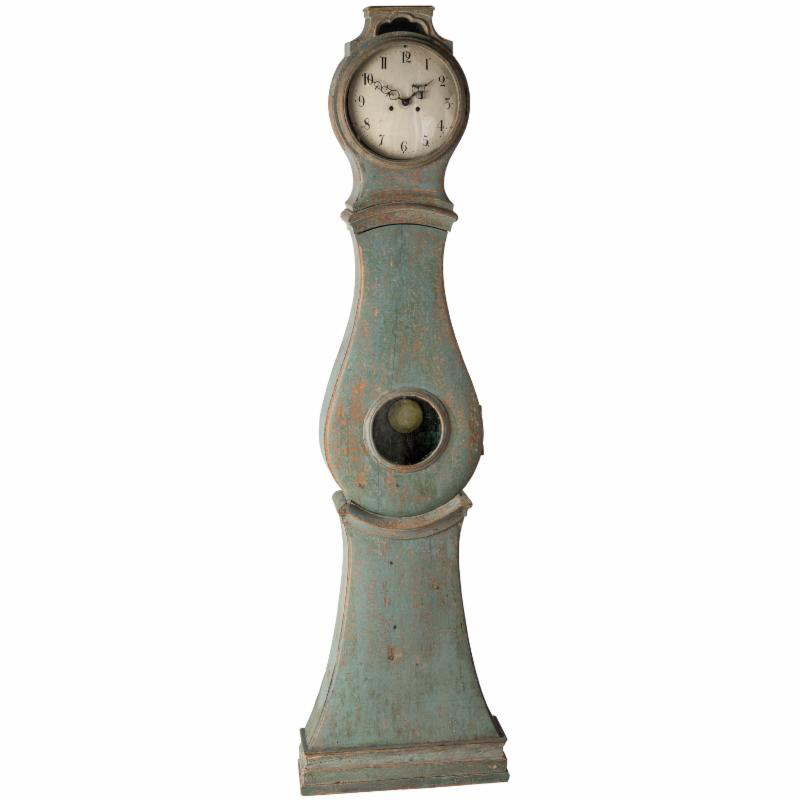
A Swedish Rococo period tall case Mora clock in original blue paint, circa 1775. The bonnet has glass windows on the side that allow one to see the clock works.
85″ high, 24″ wide, 8″ deep.
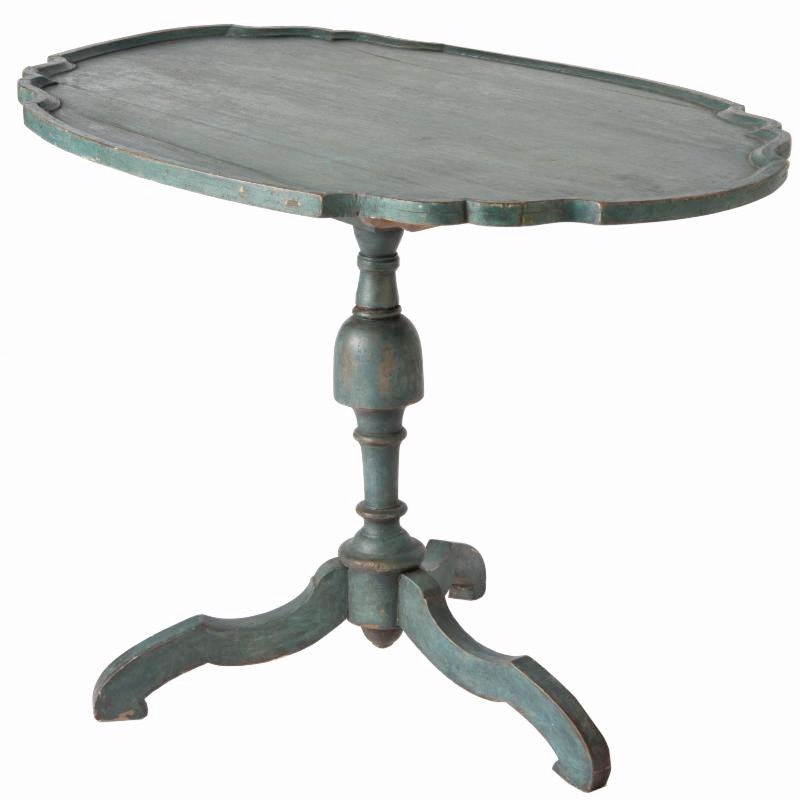
A Swedish Rococo period flip top table with a scalloped edge circa 1760. The original blue paint is in perfect condition.
29″ high 40″ wide, 29″ deep.

A Swedish Rococo period linen press or cupboard with soft blue original paint throughout and original hardware and locks circa 1760.
74″ high, 22″ deep, 48.5″ wide.

THERE IS NOTHING MORE PLEASING TO THE EYE THAN ORIGINAL PAINT, SLIGHTLY FADED BUT SOMEHOW PERFECT IN ITS IMPERFECTION.
From the master craftsmen who created Swedish clocks, cupboards and tables, to calligraphers whose inspired lettering told stories, Swedish workmanship achieved a high standard of excellence during the 18th and 19th centuries.

A Rococo cupboard from Bergslagen, an area Northwest of Stockholm, with faux grain painting in blue and coral on the doors that continues around half columns at the sides. A great example of the best elements of the Rococo style, circa 1770.
83″ high, 49.5 wide, 21″ deep
-Click on image for further details-

A diminutive country cupboard from Jamtland, a province in Sweden known for it beautiful painted furniture. This cupboard with primitive paintings of trees, was probably made as a wedding gift and dates to 1797.
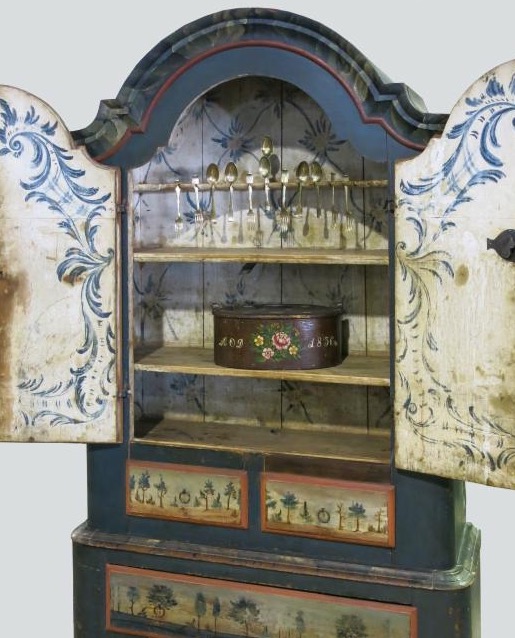
The cupboard opens to equally beautiful painting on the interior with scrolls and feathers in blue and white.

A wonderful Swedish blue, this secretary in original paint with some touchups, has a number of of great details that highlight the work of a talented calligrapher. The interior drawers are numbered one to six, a great way to stay organized in style!
-Click on image for further details-

The interior door on the right tells us that the cupboard was a wedding gift to a young couple who were married in 1837.
78.5″ high, 44″ wide, 17″ deep
-Click on image for further details-

A Swedish Slagbord, drop leaf table painted with curving blue lines against a white background. One could imagine that it was inspired by ocean waves outside the artists window. 73″ wide 45″ deep, 30.5″ high
-Click on image for further details-
The Lindome Chair Makers began making beautiful furniture in the early 18th century. Located further south than their neighbors in Stockholm these men who were once farmers became talented woodworkers due to a need to find work as the soil in their region was unfit for farming. These master craftsmen went on to produce some of the most important Swedish furniture of the 18th and Early 19th century.
 The Gunnebo House, pictured here in 1823, is a veritable treasure trove of Lindome furniture.
The Gunnebo House, pictured here in 1823, is a veritable treasure trove of Lindome furniture.

The fruit and flowers of the hops plant was the Lindome signature as seen here in a beautifully detailed carving.
 This spectacular settee is a fine example of the work of the Lindome chairmakers with signature carvings on the crest and apron. Its simple elegance and proportion make it a statement piece. Circa 1790.
This spectacular settee is a fine example of the work of the Lindome chairmakers with signature carvings on the crest and apron. Its simple elegance and proportion make it a statement piece. Circa 1790.
Click on the image for more details!

It was Spring in Paris, well almost, and we went on a shopping spree! Discovering fanciful pieces, sconces, dinner services, Swedish beauties, and French jardinieres waiting to be filled with flowers. All are on their way safely tucked in a container, arriving late April. When they arrive spring will be in full bloom!
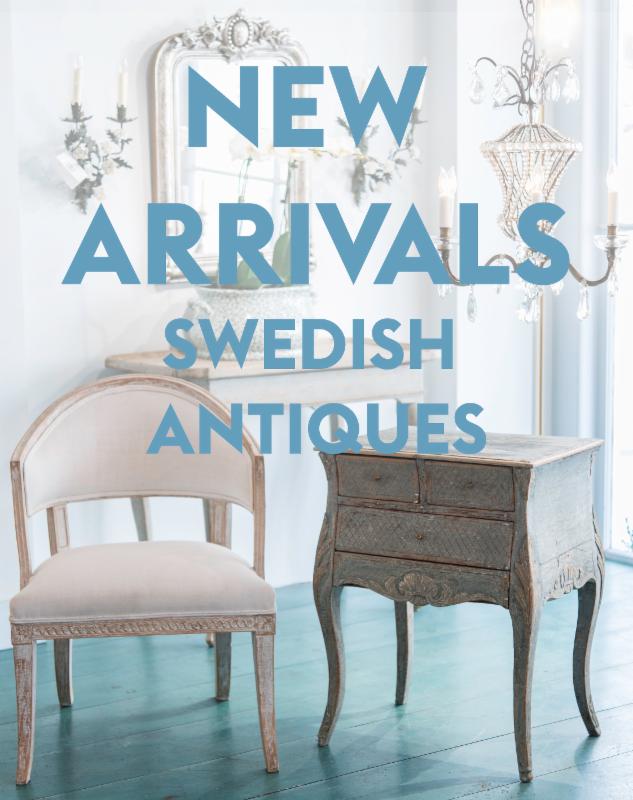
Although it was cold and snowy in Sweden we managed to find great pieces, from the smallest Rococo cabinet to a big multipurpose cupboard, and lots of chairs!!!
Click on any image for further details
| A little treasure, this three drawer cabinet of the Rococo Period has wonderful carvings and a diamond design on the two upper drawers.–28″ high, 22″ wide, 15.5″ deep |
| A pair of Swedish late Gustavian Barrel Back chairs circa 1810. With nice high backs, they are very comfortable and upholstered in a linen fabric.–33″ high, 23.5″ wide, 20″ deep |
| This set of six Gustavian period dining chairs, circa 1790, in the elegant lotus pattern, are often attributed to chair makers of the Stockholm guild.–34″ high, 18″ wide, 17″ seat height |
| A Swedish Rococo period chest of drawers, with original hardware and locks, with a nice pale putty grey paint surface. –41″ wide, 31″ high, 23″ deep |
| A set of 10 Swedish rococo style dining chairs, with carved shell motif on the crest, typical of the rococo period. Circa 1900.–39″ high, 17.5″ wide, 20″ seat height |
| A Rococo period bedside cabinet in the original green paint surface, with two doors and a drawer. Circa 1760.–29.5″ high, 19″ wide, 17.5″ deep |

At Dawn Hill Antiques we love marble, even if its heavy, fragile, and hard to move, it is worth it! A great marble surface looks better with almost anything on top of it, flowers, books, lamps, and of course food! Our collection of marble includes bistro tables in many sizes, garden tables and great pieces for the kitchen.
Click on any image for further details
 |
||
|---|---|---|
A rare Baker’s table in a wonderful small size, with original wheels and brass details. |
 |
||
|---|---|---|
A white marble topped bistro table with black cast iron arts and crafts inspired base from France circa 1900. |
 |
||
|---|---|---|
A French bistro table with a grey marble top circa 1920. |
 |
||
|---|---|---|
A French Garden Table with marble top and elaborate cast iron base. |

Flowers have always been a treasured element of decorative design enhancing everything from furniture and china to fabrics and wall papers depicting fanciful aspects of nature. In the 18th century the famous French painters of flowers adorned the walls of palaces with their exquisite creations and gilders topped their mirrors with cascades of carved flowers. In Sweden, flowers were often used on bridal clocks to depict a romantic crown of flowers worn by a bride and in Lindome, the guild of furniture makers, used the flowers and berries of the hopps plant as their symbol. It appears on some of the most beautiful Swedish chairs and benches that are still cherished today.
Click on images of all items for more information.
A Swedish Bridal Clock with an elaborate crown of carved flowers and traces of original white paint.
An English footub, possibly Coalport, with hand painted flowers, scalloped edge, and bas relief of flowers, circa 1850.
A pair of French sconces with crystal flowers and stars, late 19th century.
A 19th century Belgian still-life signed, Henri Robbe (1807-1899) features voluptuous roses and tulips and a blue transferware bowl.

update: sold
A multicolored floral ironstone pitcher, “California” pattern is perfect for flowers, circa 1850.
Delicate crystal flowers form a basket shape in this French 19th century chandelier.

update: sold
A set of four Swedish Gustavian period dining chairs bear the fruit and flower carvings of the hops plant the signature of the Lindome furniture maker’s guild in Sweden.
An English black and pink transfer ware platter with a central medallion of flowers, circa 1840.











